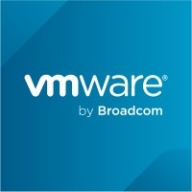


vCenter Configuration Manager and AWS CloudFormation compete in the virtualization and cloud infrastructure management category. AWS CloudFormation seems to have the upper hand due to its seamless integration within the AWS ecosystem and cost-effectiveness for users within this environment.
Features: vCenter Configuration Manager offers comprehensive management capabilities for effective control over virtual machines, high availability, and advanced automation processes. AWS CloudFormation provides infrastructure as code capabilities, strong configurability, and ease of scalability, allowing seamless resource management and flexibility with its scripting approach.
Room for Improvement: vCenter Configuration Manager could enhance hybrid-cloud management, improve snapshot functionality, and refine error reporting and integration with third-party applications. For AWS CloudFormation, improvements could include better user interface design for non-tech users, extended support for non-AWS environments, and enhanced cross-account dynamic references.
Ease of Deployment and Customer Service: vCenter Configuration Manager is deployed in on-premises and private cloud environments with mixed customer service satisfaction due to issues in support effectiveness. AWS CloudFormation offers a seamless deployment experience within public cloud environments and benefits from AWS's robust support infrastructure, with suggestions for improvement in non-AWS service integration.
Pricing and ROI: vCenter Configuration Manager is considered expensive with license-based pricing models that might be prohibitive for smaller businesses, although it provides good ROI through virtualization efficiencies. AWS CloudFormation, being free as a service, incurs costs based on deployed resources, thus offering a cost-effective solution with favorable pricing for scalable cloud deployments and solid ROI by reducing manual setup costs.
| Product | Market Share (%) |
|---|---|
| Microsoft Intune | 9.4% |
| AWS CloudFormation | 2.4% |
| vCenter Configuration Manager | 0.8% |
| Other | 87.4% |



| Company Size | Count |
|---|---|
| Small Business | 116 |
| Midsize Enterprise | 46 |
| Large Enterprise | 152 |
| Company Size | Count |
|---|---|
| Small Business | 15 |
| Midsize Enterprise | 8 |
| Large Enterprise | 17 |
| Company Size | Count |
|---|---|
| Small Business | 26 |
| Midsize Enterprise | 11 |
| Large Enterprise | 19 |
Microsoft Intune provides centralized management of mobile devices and applications, ensuring security, compliance, and productivity through integration with Microsoft services like Microsoft 365 and Azure Active Directory.
Organizations use Intune for managing mobile devices and applications, enhancing security and compliance across platforms. With features like single sign-on, conditional access, and zero-touch deployment via Autopilot, it facilitates efficient operations. Intune's scalability, easy enrollment, and capabilities such as remote wipe support diverse device management, offering robust data protection and efficient operation. Despite its features, improvement areas include reporting, compatibility with non-Microsoft devices, and better support for macOS and Linux devices.
What are the key features of Microsoft Intune?
What benefits should users look for in reviews?
In industries such as finance, healthcare, and education, Microsoft Intune is implemented to ensure secure and compliant device management. Companies leverage its capabilities to deploy security policies and manage both corporate-owned and BYOD environments, facilitating a unified approach to data protection and compliance.
AWS CloudFormation provides a common language for you to model and provision AWS and third party application resources in your cloud environment. AWS CloudFormation allows you to use programming languages or a simple text file to model and provision, in an automated and secure manner, all the resources needed for your applications across all regions and accounts. This gives you a single source of truth for your AWS and third party resources.
vCenter Configuration Manager is a powerful configuration management tool that is designed to enable organizations to ensure that any environment that they use to conduct business is configured in the most effective possible way. It can automate configurations consistently across virtual, physical, and cloud environments. Additionally, it enables users to place critical functions into the hands of the solution thereby avoiding the possibility that human error will reduce a business’s operations. It also hardens operations against bad actors who look for holes in a user’s security compliance policies that they can exploit.
vCenter Configuration Manager Benefits
Some of the ways that organizations can benefit by choosing to deploy vCenter Configuration Manager include:
vCenter Configuration Manager Features
Reviews from Real Users
vCenter Configuration Manager is a highly effective solution that stands out when compared to many of its competitors. Two major advantages it offers are its intuitive and simple design and its ability to scale according to the needs of its user.
Moses S., a project manager at Swakop Uranium, writes, “The platform is straightforward and user-friendly. A large knowledge base is not required to begin using it.”
Raju P., an Information Technology manager at Sikraft, says, “We can scale the solution as needed.”
We monitor all Configuration Management reviews to prevent fraudulent reviews and keep review quality high. We do not post reviews by company employees or direct competitors. We validate each review for authenticity via cross-reference with LinkedIn, and personal follow-up with the reviewer when necessary.